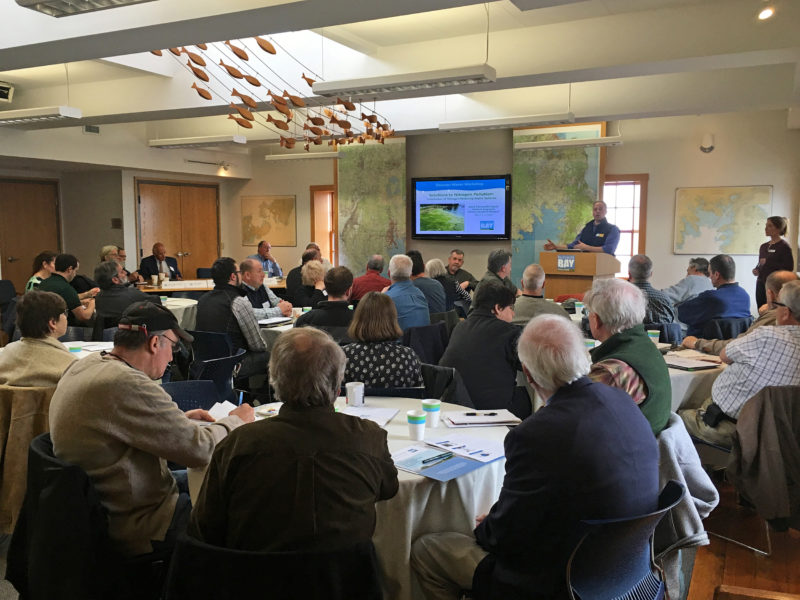Decision Makers Workshops demonstrate real-world solutions to nitrogen pollution from septic systems
Approximately 70 local government officials and septic system installers from around the Buzzards Bay region came together at two free workshops in April to learn about the results of the Coalition’s on-the-ground pilot projects to reduce nitrogen pollution from septic systems.

Approximately 70 local government officials and septic system installers from around the Buzzards Bay region came together at two free workshops in April to learn about the results of the Coalition’s on-the-ground pilot projects to reduce nitrogen pollution from septic systems.
Traditional septic systems are the biggest source of harmful nitrogen pollution to Buzzards Bay. Upgrading your home septic system to a nitrogen-reducing system is the number one thing you can do to protect clean water.
The Coalition is continuing to advance nitrogen-reducing septic system technology across the region by working with towns and homeowners to install more systems and assess their performance. This month’s successful Decision Makers Workshop series showcased technology, results, and lessons learned from two septic system demonstration projects.
At the April 4 workshop, participants got a detailed look at septic system upgrades in West Falmouth, where the Coalition partnered with the town of Falmouth to upgrade 20 septic systems in 2016. These systems used several different nitrogen-reduction technologies. Data collected in 2017 show that these new systems are reducing nitrogen by 78%.
We’re now working to put in 10 more upgraded systems around West Falmouth Harbor as part of Phase 2 of this effort. These systems are testing different technologies to try new nitrogen-reducing options and give homeowners more choice.
At the April 17 workshop, the conversation was all about layer cakes – that is, the new “layer cake” nitrogen-reducing solution that gets its name from its multi-layer leach field. Working with partners from Barnstable County and the University of Rhode Island, we’ve begun installing layer cake systems at 12 homes from Westport to Martha’s Vineyard.
Layer cake systems may offer a more cost-effective option that requires less maintenance and energy than other technologies. As part of this local pilot project, partners will test layer cake systems under a variety of conditions for at least 18 months to see how much nitrogen they reduce.
These projects are creating models we can use across the region to reduce nitrogen pollution and change the way our communities view and permit septic systems. As more of these systems go into the ground and provide solid data, we will better understand how they work under various conditions – and we’ll continue to pass along these lessons to Buzzards Bay’s local decision makers.